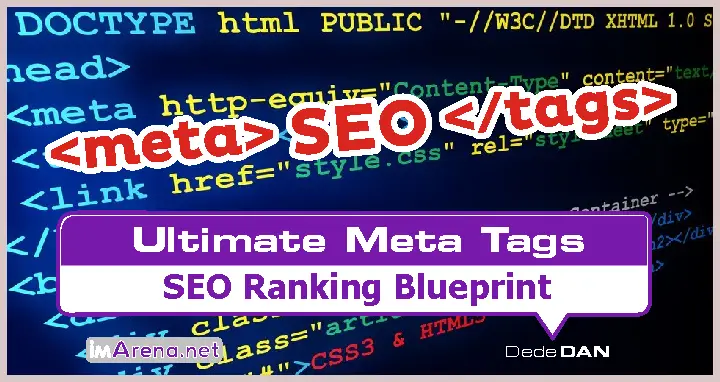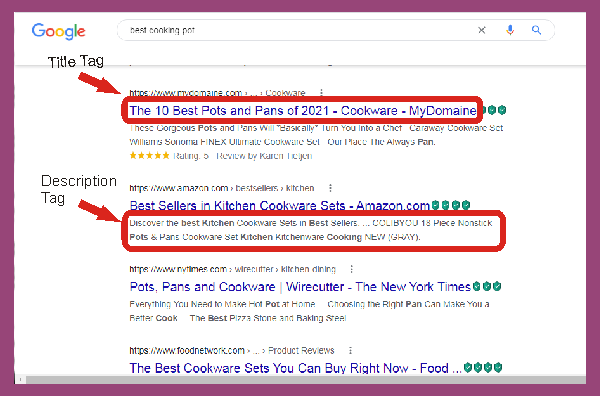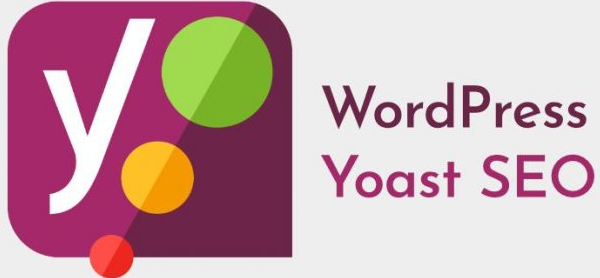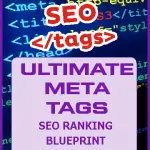

I hope you enjoy reading this blog post.
If you want my team to just do your marketing for you, click here.
Meta Tags are very important SEO factors for organic search engine ranking. When it comes to organic SEO ranking, there are many factors that can take your site to the top. A google digital marketing agency will tell you that the more of them you accomplish, using the standard practice, the higher you rank.
Likewise, the more of these factors you flout or try to game the system, the higher your chances of being penalized by search engines like Google.
Of the over 200 factors that Google uses to rank web pages on its SERPS, the one factor that is prominent and appears in different options is meta tags. This shows how important meta tags are to search engine ranking.
In this article, I will walk you through everything you need to know about meta tags in 2024, and how to use them effectively for higher Google ranking.
What are HTML Meta Tags
Meta tags are a type of HTML tag that adds metadata to a web page. These tags inform the search engines what the web page is all about, using the HTML codes that search engines understand. In website design, metadata must be incorporated if the website must score high in SERPs.
Metadata on its part is the data that provide information about one or more aspects of the data. It summarizes basic information about the data so that they finding them and working with them becomes easier

My Agency can Help You Make Money Online
Cashcow Videos - we create engaging faceless cashcow and business explainer videos that earn passive income.
Monetized Blogs - select from our list of ready-made niche blogs that are already approved for monetization.
Business or Website Traffic - using various digital marketing strategies, we drive massive amounts of targeted traffic to your website.
Posts category, posts tags, and posts post_type are all kinds of metadata because they all provide more information about the post itself.
Difference Between Meta Tags and Taxonomies
The major difference between meta tags and metadata tags tells the search engines about the hierarchy of the website
Meta tags are text snippets that describe the content of a page. These meta tags do not appear on a page, hence they are mostly useful to search engines.
Metadata provides more information about the meta tags and is visible on the page (for example post categories and post tags).
Types of HTML Meta Tags
Title Tag
This is the clickable title you see on the search engine result page. It is placed in the <head> of the page and provides information to the search engines about what the webpage is all about.
The <title> tag appears as a clickable headline element in the search engine result pages and other web properties like on social networks.
Implementing this in WordPress is very easy, just entering the title into the title box produces the title tag for search engines to view.
In HTML, the title tag looks something like this
<head>
<title>Ultimate Meta Tags SEO Ranking Blueprint 2024</title>
</head>

Meta Description Tag
Similar to the Title Tag, the Meta Description tag refers to the description which you see below the article title on search engine result pages. It essentially describes what you are likely going to read if you click through to the page.
This is how it appears in raw HTML:
<head>
<meta name= ”description” content=”This article is about HTML Meta Tags and How to Optimize Them for SEO Purposes in 2024.”>
</head>
H1 Heading tag
This tag is used as the heading of the posy/page. It helps Google to understand the title and what the article is all about.
This is how it looks in HTML:
<h1>This is heading 1</h1>
H2 – H6 Tags
These are sub-title tags. Used to segment the post/page into sections to easily understand the article structure and how to make meaning of it. It’s useful to both search engines and humans alike.
Together with the H1 tag. they are HTML tags that explain to google bots which are the headline, sub-headlines, sub-sub headlines, etc. This helps Google to easily understand the article structure and how to make meaning of it.
This is how they looks in HTML:
<h2>This is heading 2</h2>
<h3>This is heading 3</h3>
<h4>This is heading 4</h4>
<h5>This is heading 5</h5>
<h6>This is heading 6</h6>
Image Alt Tag
Popularly referred to as ‘alt tag and description text’, these are text copy forms of an image. It is what really explains to the search engines what the image is all about. Also, if for some reason, the browser is unable to load the image, this tag is shown instead.
In HTML, the image alt tag looks like this
<img src=”imagetitle.jpg” alt=”Preferred Plain Title”>
Schema Markup Tag
This is a schematic code that helps search engines output SERP results that are more informative and eye-catchy to users.
HTML5 Semantic Tag
According to w3school, a semantic element describes clearly its meaning to both the developer and the browser.
Examples of semantic elements: <form>, <table>, and <article> – Clearly defines its content.
Examples of non-semantic elements: <div> and <span> – Tells nothing about its content.
Here are some semantic elements:
<article>
<aside>
<details>
<figcaption>
<figure>
<footer>
<header>
<main>
<mark>
<nav>
<section>
<summary>
<time>
These tags are a lot more technical, as they have to do with machine-readable forms. Luckily, they include the <header>, <footer> and <article> elements.
Meta Robots Tag
Meta robots tag tells the search engine robots what aspect of the page to follow and what not to follow. It’s like saying, hey Google, don’t go there, follow here instead.
This becomes necessary when you want to hide some stuff from the searching public for some reason. You may want them to see such only when they arrive at your site.
In HTML, it is used this way:
<meta name=”robots” content=”noindex” />
Canonical Tag
This is another very important tag, especially for big blogs with many articles. It essentially tells the search engines which of 2 or more related articles is the main one, hence they should treat it as such and give it more relevance.
Without having such a tag implemented, the search engine may dilute the power of the 2 or more articles, thereby allowing others to go above your article.
You add it to the other articles that are not your preferred articles, thereby telling search engines that the article with the canonical tag is the main article.
In HTML it is used this way:
<link rel=”canonical” href=”https://example.com/wordpress/main-article/” />
Sponsored and “UGC” Tags
This type of meta tag tells the search engines that the links are either sponsored (“rel=sponsored”) or User Generated Content (“rel=UGC”).
How to Optimize Meta Tags for Higher SEO Ranking
Knowing the meta tags is one thing, then knowing how to optimize their usage to achieve higher search engine ranking is another thing altogether.
For you to take advantage of meta tags in ranking your web pages and website, you need to employ best practices for their usage. To do this effectively, you have to take each one and apply the SEO principles that it’s meant for.
Here are the ways you can optimize the usage of these meta tags to help your pages rank higher in search engines:
-
Analyze The Web Page
As always, I insist on analyzing a web page to determine its on-page SEO status and what needs fixing or total change. As humans, there is always the tendency to forget something.
Start by auditing the page/website SEO status with a good SEO analysis tool There are many good site optimization tools out there, both free and paid. Choose a good one and analyze the page SEO status
-
Title Tag Optimization
– Ensure the title tag starts with the keyword you want to rank for. Unless it’s not grammatically correct.
– It’s Best to limit the title tag to about-60 characters long. Though you can go up to 70 for desktop and 78 for mobile.
– Recently, adding the current year (2024) has become fashionable and expedient. Google tends to favor current and updated articles. Also, there are users who look out for current information.
– Do not use more than one H1 tag <H1> on any post.page. This confuses search engines about what the page is all about.
– Since it’s not visible on the page, you can tweak it by using very attractive words to induce searchers to click on your article title and land on your page. There are basic formulas for crafting attractive and click-worthy meta headlines. One such formula is:[Number] [Adjective] [Keywords/Desired Outcome]
Example
[21] [Proven] [Ways to Achieve a Flat Tommy]The reason is simple:
[Number] – People like figures. They want to be sure their options are not just one
[Adjective] – This essentially gives an attribute to the main objective
[Keywords/Desired Outcome] – By this, you are essentially reminding people that this article is what they have come to search for. -
Meta Description Tag Optimization
– Start by adding the main keywords in the description
– Also add the keyword synonyms to the description tag
– Limit the characters between 150 and 160.
– This tag not only helps for SEO but also enhances the user experience. -
H1 Heading Tag Optimization
– Add the main keyword to the <H1 tag>
– Ensure there is not more than one instance of the <H1> tag on any page.PS
Don’t confuse the Title Tag and the H1 tag. The H1 tag typically informs search engines through HTML what the page is all about, while the Title tag is used both by humans and search engines too. You can decide not to make the Title tag as same the H1, this way, while humans see the title as something, search engines typically look at the HTML and pick the H1 tag as the main article title.
-
H2 to H6 Sub-heading Tags Optimization
– Structure these tags in hierarchical format for easy understanding of the search bots.
– Be sure to use H2 through to H6, especially H2 and H3 tags. -
Image Alt Tag Optimization
– It is the alt text that tells the search engines what the image is all about.
– The image alt tag is very important for the singular reason of being displayed if the browser is unable to load the image.
– Also visually impaired visitors are able to understand what the image is all about when they use screen readers.– Most SEO plugins already provide the field to ass this tag. ensure you, don’t miss out on using it. Thankfully, the Webtimizer tool finds out any image that doesn’t have an alt tag.
-
LSI Keywords in Title and Description Tags
– Ensure you add to the title and descriptions, Latent Semantic Indexing, which is the method that search engines use to compare and study the relationships between different keywords and concepts.
-
Schema Markup Tag Optimization
– It’s wise to implement this tag. Use Yoast SEO premium or other schema plugins that output click-baiting listing on SERPs.
-
Canonical Tag Optimization
– Another very important tag, especially for big blogs with many articles. It essentially tells the search engines which of 2 or more related articles is the main one, hence they should treat it as such and give it more power. This eliminates any chance of you fouling the Google duplicate content factor.
Tags To Avoid in SEO
-
Meta Keywords (discontinued)
Avoid Meta Tag Spamming: Keyword stuffing can also happen in meta tags. If Google thinks you’re adding keywords to your title and description tags in an
the effort to game the algorithm, they may hit your site with a penalty.
As can be seen in this video, Google has stopped using meta keywords as a ranking factor. Though they still consider it for some reasons, the danger, and negative exposure it gives to your site is not worth the risk. It’s better to discontinue using it.
Also Bing and Yahoo, the other giant search engines have also stopped using meta keywords as ranking factors.
-
Tag Taxonomy
Taxonomy and Tags
Taxonomies are ways of grouping articles, so they can be found easily. They are Categories and Tags.
For the purposes of SEO, ensure you limit your categories to not more than 12 categories. This means its ideal to allow your site categories to be indexed
by search engines
But the post tag taxonomy is a little tricky for SEO. This is because you can add as many tags as you want. This makes it an SEO risk. It’s not ideal to allow search engines to index post tags.
Normal taxonomical tags do not help SEO. It can even lead to duplicate content because you can add as much as you want. But unknowingly, you can have more than one.
Tools for Meta Tags SEO Optimization
Here are some SEO optimization tools that can be used to optimize meta tags and other SEO on-page factors of a website.
Yoast SEO WordPress Plugin
Yoast WordPress is a comprehensive SEO plugin for WordPress. It can be used to easily add, edit and optimize different HTML tags like Title, Description, and more.

Webtimizer All-in-one SEO Analysis Tool
Webtimizer SEO Analysis Tool analyzes a webpage using over 50 SEO metrics and returns a perfect, easy-to-understand result from where you can identify what and where you need to work on for a higher ranking.
How to use Webtimizer
Put the website/page URL into the search area of the SEO audit tool and click ANALYZE. The Webtimizer will do a quick analysis of the web page and present the outcome.
To fix, start by looking at the results in red and then following the suggestions to fix them. The SEO analysis tool is very thorough and does a very good job of scrutinizing many SEO issues.
Then go ahead and look at the meta tags to find out if any of them has an issue that needs fixing. If they do, you can follow the app’s suggestions to fix them, You can also do the following to get the page good chances of high organic ranking.
Meta Tags Generator
Meta Tags Generator is one of the tools that make up Webtimizer. As the name clearly states, it can be used to generate meta tags that will help your pages rank.
All you need do is to enter some basic information about your website/page and the tool will generate necessary tags that you can implement in your site.
Meta Tags Analyzer
Again, this meta tags analyzer is part of Webtimizer SEO tools. Another meta tag tool that is very simple to use.
All you have to do is to paste the URL of the webpage and the tool will analyze its meta tags including title, description, keywords, viewport, graph.
FAQ About HTML Meta Tags
-
Do WordPress Tags Help Your SEO?
Don’t confuse them, this question is talking about the WordPress tags taxonomy, not the meta tags.
As stated above, WordPress tags are a way of grouping articles so they can be easily reached. There is no proof that WordPress tags help SEO. If anything, it can even act as a risk or outright danger if not done well. I always advise that they are no-indexed.
-
Do tags improve SEO?
Simply put – YES!. The entirety of this article is to explain how the different HTML tags can be used to improve SEO.
-
How to add Meta Tags in WordPress?
Adding meta tags in WordPress is very easy. Plugins like Yoast, All in one SEO, Squirrly, SEOPresseor, and others make it super easy to add meta tags to your WordPress articles.
At the bottom of the article, the plugins make available the spaces for you to add the words while the plugins themselves take care of technical HTML works like inserting it into the relevant sections of the webpage.
In Conclusion
With so many ranking factors involving meta tags, it’s easy to say that the different meta tags are one of the most important when it comes to ranking your articles and website.
Whatever be the case, tags like title tags, description H1-H6 tags, Alt tags, and others should not be seen as mere issues. They should be treated as major integral factors in your article writing and ranking process.





